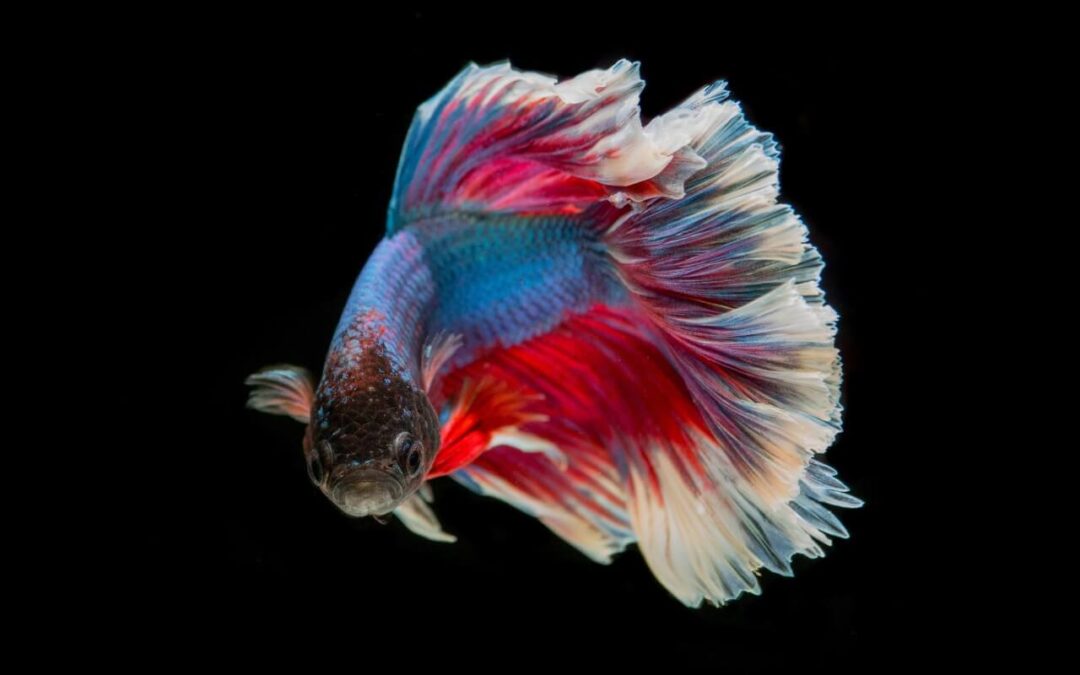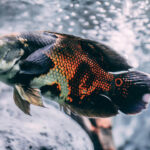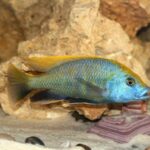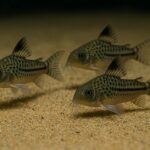Bettas, also known as Siamese fighting fish, are among the most beautiful and captivating freshwater fish in the aquarium world. Their vibrant colors and flowing fins make them a favorite for beginner and experienced aquarists alike. But as their nickname suggests, bettas aren’t always the friendliest fish in the tank.
So, can you actually keep other fish with a betta? The answer is yes—but only if you choose carefully. Not all bettas are the same, and not all fish make good roommates. In this article, we’ll walk you through what fish can live with bettas, the important factors to consider, and how to keep the peace in your tank.
Why Bettas Can Be Picky Roommates
Before diving into the list of potential tank mates, it’s important to understand betta behavior. Male bettas in particular are known for being territorial and aggressive, especially toward other fish that resemble them or intrude on their space.
Some bettas are more chill, while others will lash out at anything that moves. That’s why compatibility depends not only on the type of fish you’re introducing—but also on your individual betta’s temperament.
Here are a few general rules to guide your decision:
- Avoid other long-finned or colorful fish that may be mistaken for rivals.
- Never pair two male bettas together.
- Ensure there’s enough room—crowded tanks lead to stress and fights.
- Choose peaceful, non-aggressive fish that mind their own business.
Now, let’s look at some fish (and other creatures) that can peacefully live with bettas.

Top Tank Mates for Bettas
1. Corydoras Catfish
Corydoras, or “Cory cats,” are small, peaceful bottom-dwellers that rarely interact with bettas. They spend most of their time scavenging on the tank floor, helping to keep the substrate clean.
- Why they work: They stay out of the betta’s way.
- Tank tip: Keep them in groups of 4-6. They’re social fish and do better in schools.
- Minimum tank size: 20 gallons when paired with a betta.
2. Neon Tetras
These tiny, fast swimmers are brightly colored and best kept in schools. While their color may be bold, their speed usually keeps them safe from betta aggression.
- Why they work: Quick swimmers that avoid confrontation.
- Tank tip: Keep a group of at least 6 to reduce stress and fin-nipping.
- Minimum tank size: 20 gallons.
3. Harlequin Rasboras
These are one of the most reliable betta tank mates. Hardy, calm, and non-aggressive, harlequin rasboras add peaceful movement and subtle color.
- Why they work: Peaceful nature and no interest in betta territory.
- Tank tip: They do best in schools of 6 or more.
- Minimum tank size: 15–20 gallons.
4. Kuhli Loaches
These shy, eel-like fish are nocturnal and spend their days hiding under plants or decorations. They’re great at cleaning up leftover food and staying out of the spotlight.
- Why they work: Nocturnal and keep to themselves.
- Tank tip: Provide hiding spots and a soft substrate.
- Minimum tank size: 20 gallons.
5. Ember Tetras
Tiny and gentle, ember tetras are peaceful fish that don’t resemble bettas or provoke them. Their warm orange-red color adds a pleasant contrast to the tank.
- Why they work: Peaceful, small, and non-threatening.
- Tank tip: Keep in groups of 6 or more for schooling behavior.
- Minimum tank size: 10–15 gallons.
6. Platies
Platies are colorful livebearers with peaceful temperaments. They don’t nip fins and usually won’t compete with bettas for food or territory.
- Why they work: Generally calm and adaptable.
- Tank tip: Avoid overcrowding; they can breed rapidly.
- Minimum tank size: 20 gallons.
7. African Dwarf Frogs
Not technically fish, but these little amphibians are sometimes kept with bettas. They’re slow and peaceful, but can struggle at feeding time if the betta is a fast eater.
- Why they work: Different species with minimal overlap in behavior.
- Tank tip: Monitor feeding to ensure they get enough food.
- Minimum tank size: 10 gallons.
8. Ghost Shrimp and Cherry Shrimp
These tiny invertebrates are hit or miss with bettas. Some bettas ignore them completely; others see them as snacks. Ghost shrimp are transparent and cheaper, while cherry shrimp add a nice pop of red.
- Why they might work: Peaceful and good tank cleaners.
- Tank tip: Provide lots of hiding places and monitor betta behavior.
- Minimum tank size: 10 gallons.
9. Otocinclus Catfish (Otos)
These algae eaters are small, peaceful, and rarely seen by bettas as competition. They cling to glass and plants, doing a great job keeping the tank clean.
- Why they work: Stay out of the way and contribute to tank health.
- Tank tip: Keep in groups of 3–6.
- Minimum tank size: 15–20 gallons.
10. Bristlenose Plecos
Unlike the common pleco, which grows very large, the bristlenose stays a manageable size (around 4–5 inches). They’re gentle bottom dwellers who mind their own business.
- Why they work: Peaceful and helpful algae eaters.
- Tank tip: Provide driftwood or caves for hiding.
- Minimum tank size: 30 gallons.
11. Guppies
Guppies can be a risky choice. While they’re peaceful, some bettas may mistake their flowing tails for rival fins. If you do want to try guppies, stick with short-finned varieties.
- Why they sometimes work: Peaceful, small, and colorful.
- Tank tip: Avoid fancy, long-finned types and monitor your betta’s behavior.
- Minimum tank size: 15–20 gallons.
Things to Consider Before Adding Tank Mates
Choosing the right species is only half the battle. Several other factors affect how well your betta will adjust to new roommates:
✅ Tank Size
A bigger tank means more space, more hiding spots, and less competition for territory. A 5-gallon tank is best suited for a solo betta. For community setups, aim for at least 15–20 gallons, depending on the number and type of tank mates.
✅ Temperament of Your Betta
Some bettas are chill, others are territorial tyrants. Always observe how your betta reacts when new tank mates are introduced. Be ready to separate them if aggression starts.
✅ Fin Nipping and Rivalry
Avoid fish that nip fins (like some barbs or aggressive tetras) and fish with long, flowing fins that resemble another betta. Both can cause stress and injury.
✅ Feeding Competition
Some fish are slow eaters (like dwarf frogs), while others snatch food quickly. Ensure everyone gets their share—especially if the betta is a food hog.
✅ Aquascaping
Plants, caves, and decorations create barriers and hiding places. This helps reduce aggression and gives fish a place to retreat.
Signs of Trouble to Watch For
Even with the perfect setup, issues can arise. Keep an eye out for:
- Chasing or flaring: Classic signs of betta aggression.
- Torn fins: A possible result of fighting or fin nipping.
- Missing tank mates: Bettas might eat smaller creatures like shrimp.
- Stress stripes or lethargy: Indicates unhappiness or fear in your betta.
If any of these signs appear, be ready to rearrange the tank, remove a fish, or revert your betta to a solo lifestyle.

Final Thoughts: Know Your Betta
At the end of the day, every betta is different. Some live peacefully in community tanks for years. Others just want their space. Take things slow when adding new fish. Quarantine new tank mates, observe closely, and be prepared to adjust as needed.
Keeping a betta in a peaceful, well-balanced community tank is rewarding—but it requires knowledge, patience, and a close eye. With the right companions and a thoughtful setup, your betta can coexist happily and thrive alongside other aquatic friends.
Summary Checklist: Fish That Can Live with Bettas
| Species | Notes |
| Corydoras Catfish | Bottom-dweller, peaceful |
| Neon Tetras | Fast swimmers, best in groups |
| Harlequin Rasboras | Hardy and peaceful |
| Kuhli Loaches | Nocturnal, shy |
| Ember Tetras | Tiny and peaceful |
| Platies | Livebearers, generally calm |
| African Dwarf Frogs | Amphibians, slow eaters |
| Ghost/Cherry Shrimp | May get eaten—add with caution |
| Otocinclus Catfish | Algae eaters, peaceful |
| Bristlenose Plecos | Algae eaters, need space |
| Guppies | Use short-finned varieties only |
By understanding the unique nature of bettas and carefully selecting compatible tank mates, you can build a vibrant, peaceful aquarium where all species thrive in harmony.






